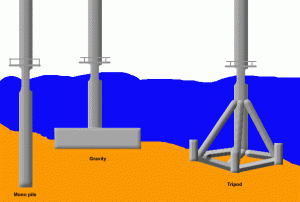UNDERGRADUATE AND GRADUATE-LEVEL COURSES:
Introduction to Civil Engineering (Sophomore-Level 4 Credit Course)

As a co-instructor of this course, I have supervised the geotechnical aspect of this course which included evaluationg properties of soils based on reginal soil maps, evaluation of drainage conditions and slope stability based on regional topographic maps for the design of a college campus. Tall structures, roads, low profile buildings, were key infrastructure elements that were part of the design process.
Geotechnical Engineering (1 of 2) (Undergraduate-Level 3 Credit Course)
This course starts teaches the basic physical and mechanical properties of soils needed for engineering projects. These properties include, soil mass and volume calclations, plasticity and soil gradation and how these properties are used to classify soils, shear strength and influence of effective stress non shear strength, hydraulic conductivity and flow of water through soils, flownets for 2-D flow analysis under dams and sheet pile walls, consolidation of fine-grained soils. Click here to obtain a copy of the course syllabus.
Landfill Design (Senior and Graduate-Level 3 Credit Design Course)

This course starts with the basic principles from soil mechanics, fluid mechanics, and hydology to build skills required for desiging liner, leachate collection system, gas extraction system and gas to energy plants. This course invloves design of spreadsheet progrms to perform in-depth iterative calculations for the design. Students also learn the regulator computer model Hydrologic Evaluation of Landfill Performance (HELP) to estimate leachate generation from landfills. Click here to obtain a copy of the course syllabus.
Properties of Soils (Graduate-Level Lab-Based 3-Credit Course)

This course teaches the skills needed to design lab experiments to measure soil properties. The soil properties instructed in this course include compaction and its effect on dry unit weight, optimum water content and saturated hydraulic conductivity; consolidation and interpretation of consolidation parameters and dependanc of these properties on stress history; soil water characteristic curves and unsaturated hydraulic conductivity functions for coarse and fine-grained soils. Students usually carry out a case study of a published geotechnical or geoenvironmental failure using 1:200 scale model in a 250lb-200G centrifuge. Click here to obtain a copy of the course syllabus.

 This short course includes introduction to the concept of water balance covers which are made of native soils and do not contain geomembrane. This course provides an overview of how soils store water and how the water can be removed by evaporation and transpiration (ET) if the cover is designed properly to ensure very little water percolates. This course also covers field-scale monitoring of water balance covers using lysimeters and moisture and water potential sensors. Finally, this course talked about the key limitations of these covers and their suscepitibility to develop cracks and preferential flow conduits.
This short course includes introduction to the concept of water balance covers which are made of native soils and do not contain geomembrane. This course provides an overview of how soils store water and how the water can be removed by evaporation and transpiration (ET) if the cover is designed properly to ensure very little water percolates. This course also covers field-scale monitoring of water balance covers using lysimeters and moisture and water potential sensors. Finally, this course talked about the key limitations of these covers and their suscepitibility to develop cracks and preferential flow conduits. 


